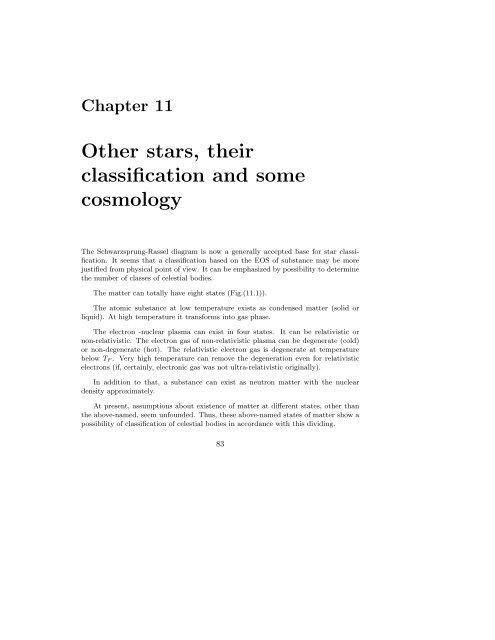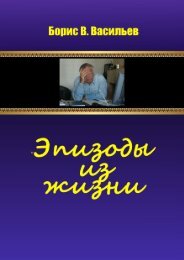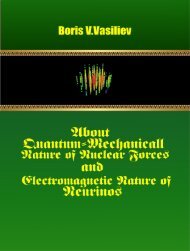VbvAstE-001
Book Boris V. Vasiliev Astrophysics
Book Boris V. Vasiliev
Astrophysics
You also want an ePaper? Increase the reach of your titles
YUMPU automatically turns print PDFs into web optimized ePapers that Google loves.
Chapter 11<br />
Other stars, their<br />
classification and some<br />
cosmology<br />
The Schwarzsprung-Rassel diagram is now a generally accepted base for star classification.<br />
It seems that a classification based on the EOS of substance may be more<br />
justified from physical point of view. It can be emphasized by possibility to determine<br />
the number of classes of celestial bodies.<br />
The matter can totally have eight states (Fig.(11.1)).<br />
The atomic substance at low temperature exists as condensed matter (solid or<br />
liquid). At high temperature it transforms into gas phase.<br />
The electron -nuclear plasma can exist in four states. It can be relativistic or<br />
non-relativistic. The electron gas of non-relativistic plasma can be degenerate (cold)<br />
or non-degenerate (hot). The relativistic electron gas is degenerate at temperature<br />
below T F . Very high temperature can remove the degeneration even for relativistic<br />
electrons (if, certainly, electronic gas was not ultra-relativistic originally).<br />
In addition to that, a substance can exist as neutron matter with the nuclear<br />
density approximately.<br />
At present, assumptions about existence of matter at different states, other than<br />
the above-named, seem unfounded. Thus, these above-named states of matter show a<br />
possibility of classification of celestial bodies in accordance with this dividing.<br />
83













